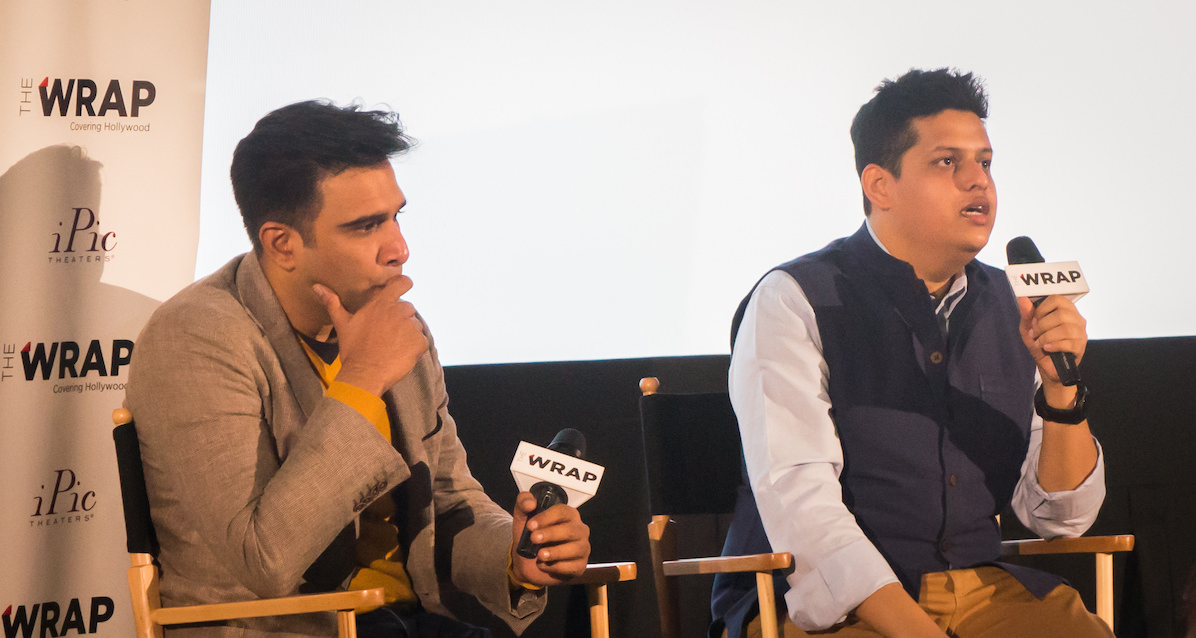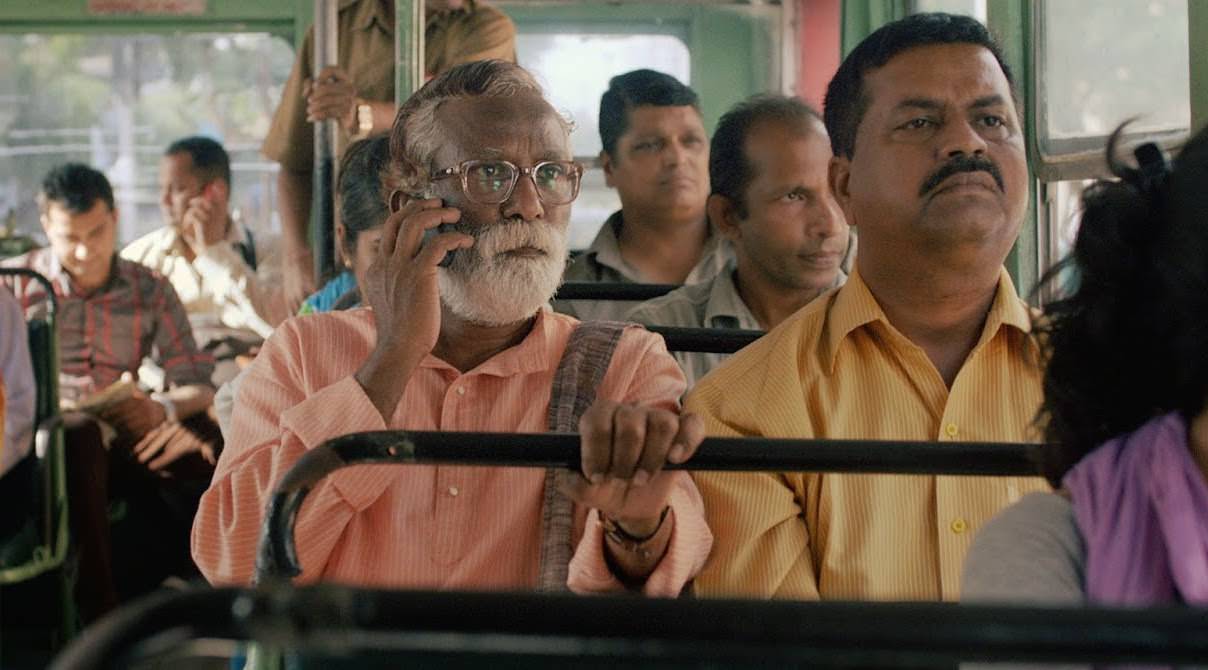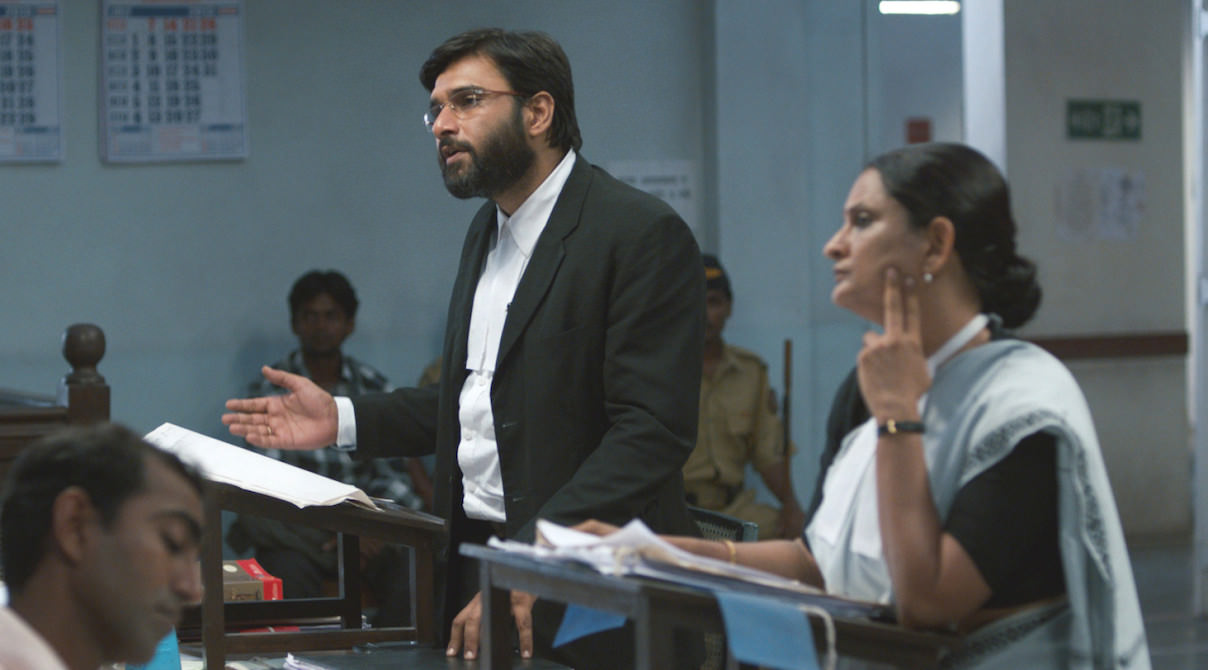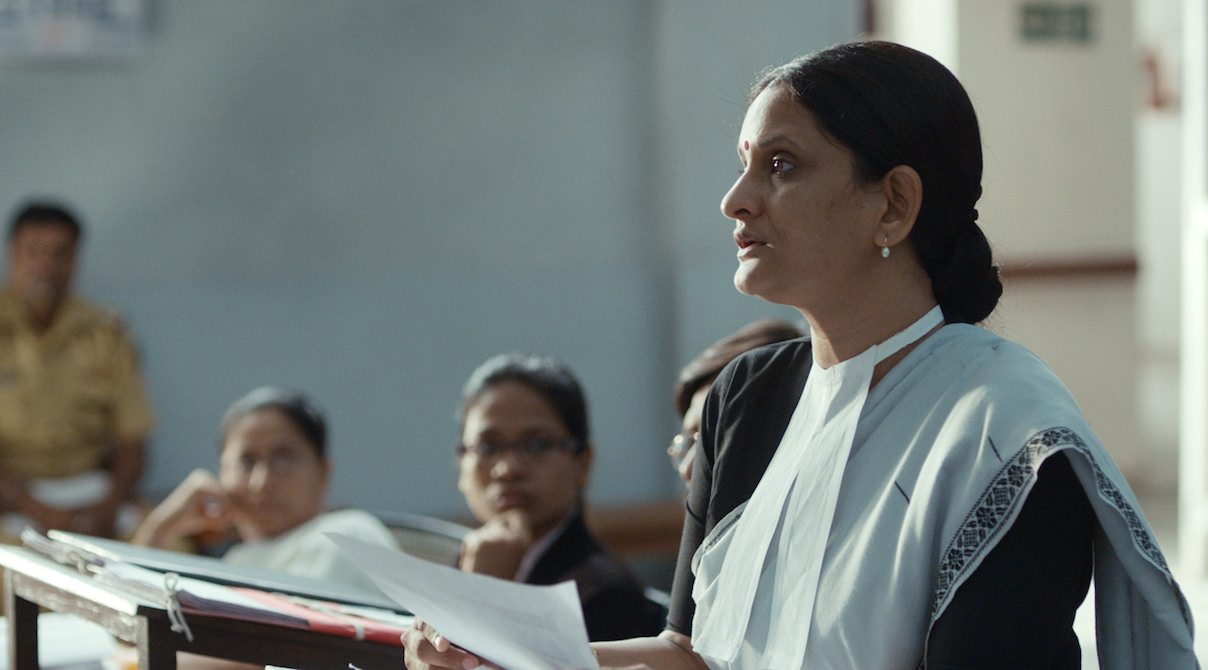
Suited-up for the race to the Best Foreign Language Film Oscar, young Indian filmmaker Chaitanya Tamhane and his lead actor and producer, Vivek Gomber were deservedly basking in the warmth of audience reception after a special screening (courtesy: The Wrap) of their debut film ‘Court’ in Los Angeles last week.
Experiencing the film in the state-of-the-art theater, with premium fully-reclining seats, waiter service and drinks, our comfort level was a far cry from the deeply discomforting proceedings that were unfolding on screen. And yet, regardless of the authentic Indian setting, with dialogues in 4 different languages, the satire was anything but lost on the predominantly American audience of industry professionals and journalists. They found it easy to draw parallels with its universal themes of discrimination, economic disparity and the anti-immigrant sentiment (Mumbai’s can be no less traumatizing than America’s) and were regaled with the humor –be it about inquisitive parents or the inherent ambiguity of a country’s laws.
Court de-glamorizes the courtroom by humanizing its lawyers and lawmakers. It reveals the chaotic mess of trials, as opposed to formulating heroics of intellect and oratory skills that we are conditioned to viewing on screen. On being asked what led him to take on such an experimental film as his first project, the 28-year old director said that the idea occurred to him while watching a typical American courtroom drama. “I started wondering what it is like to be in an actual courtroom. We always see these sharp lawyers and these very dramatic sequences. So I decided to visit a lower courtroom in Mumbai and I was fascinated with what I saw because there was an air of mismanagement. It was chaotic and people were not taking it very seriously. There were no mics, the lawyers were not always prepared with what they were saying and yet there were life and death decisions being made in that room! So I saw some scope for humor and satire.”, he said.
“There were no mics, the lawyers were not always prepared with what they were saying and yet there were life and death decisions being made in that room!” – Tamhane
Inspired by the work of French documentary filmmaker Raymond Depardon and Polish director Krzysztof Kieślowski’s short film ‘The Office’, Tamhane embarked on a year-long journey of research in many different courtrooms, conducting interviews for his material. Fortunately for him, Vivek Gomber, who had earlier collaborated with him on a play, jumped on board and expressed interest in producing the film, eventually investing his own money when regular channels did not materialize. They decided that to enhance viewer engagement with the narrative, they needed faces that had never been seen on screen before. This led to an extensive casting process where they auditioned hundreds across the city –from bankers and teachers to railway workers. “Each audition lasted about half an hour and we created a database of 1800 people over a period of a year. It was a very tedious but very interesting process. The challenge was to perform the scripted lines. There were long takes and no cuts. So if there’s a mistake, you have to start all over again. These are 5 to 6 minute scenes, which is why we shot only one scene a day. We did 30-40 takes on average and sometimes over 60.” , recollected Tamhane.
One of the most poignant performances in the film comes from Vira Sathidar, who plays Narayan Kamble –the protest singer publicly performing his rebellious songs, deriding the government and the decadence of society. When Kamble is convicted of ‘abetment of suicide’ of a sewerage worker who died a few days after one of his performances (the film’s premise), he remains unfazed and undeterred. When asked if the film’s plot was based on true events, Tamhane said that while his script is fictitious, he was indeed inspired by a few real cases. “One of them was of a folk singer called Jiten Marandi who is a cultural activist in North India. There was a massacre in his state and the name of one of the suspects was also Jiten Marandi. They couldn’t find the real one so they arrested him instead. It was also convenient in a way because he was anti-establishment. And they sentenced him to death!” he lamented. “He was finally released a couple years ago, after being in jail for many years. Those kind of cases inspired me – the absurdity of it all.”

Along with the social themes, humor runs as an undercurrent through the entire film. A dozing attorney at the edge of frame; a restaurant doorman dressed in royal regalia making a dash for cover when some miscreants attack a customer; it’s sprinkled everywhere. But the scene that elicited the most laughs was that of the defense lawyer’s (Gomber) visit to his Gujarathi parent’s home over lunch. Gomber said that the sequence took the most number of takes to perfect – 67 to be precise. The first-time actors who play the parents were found in a senior citizens home in Mumbai. “There are a lot of firsts in the film”, emphasized Gomber. “Our production designers had never been on a set before – one is an architect, the other is an animator. The casting director is actually an actor who took on the job for the first time.”
When asked about the decision to not move the camera in many scenes and the use of wide-shots, Tamhane joked that they forgot to move the camera. “I’m kidding. It was a deliberate choice which many people attribute to my theatre background. Actually, I felt that it was the need of the narrative because the gaze is distant and objective. Camera movement or unnecessary punctuation through tracking shots or steadicam would make you aware that you’re watching a film, whereas we wanted a ‘fly on the wall’ kind of experience. So we just didn’t find it necessary.”, he explained.
“Camera movement or unnecessary punctuation through tracking shots or steadicam would make you aware that you’re watching a film, whereas we wanted a ‘fly on the wall’ kind of experience.” –Tamhane

One of the finest accomplishments of Court is its marvelous rendering of 3-dimensional characters. There is no straight-up villain and no outright hero. They are each working in the confines of their circumstances and their lives are a product of their respective socio-economic strata. On the audience’s question about the economic class difference between the two attorneys, Tamhane explained, “This kind of disparity or gradation of class boils down to what Mumbai is as a city. It is very diverse. There are thousands of universes existing at the same time and people live very insular lives. They are tuned into very different universes within the same city. The courtroom happens to be this one space where they all collide and then they go back to their insular lives. The classes are also not as black and white as upper class, middle class, lower class. There are gradations to that as well.”
“This kind of disparity or gradation of class boils down to what Mumbai is as a city. There are thousands of universes existing at the same time and people live very insular lives.” –Tamhane
Just like the film’s non-template courtroom scenes, the end (where we see the judge on a family vacation) comes as a surprise, because it forces you to make your own observations. “A lot of people love it. A lot of people don’t get it or feel it’s unnecessary.”, admitted Tamhane. “For me, I would actually attribute it to my cheeky sense of humor. Apart from that, it’s also very interesting to me to see the judge outside of the courtroom. In every courtroom that I’ve seen, I feel that the judge is this unquestioned figure of authority whose word is the final word. I was very interested in seeing who this judge is; what is his place in society, what is his value system. Because he is also just a human being who happens to have become a judge.”

“It won the National Award for Best Film which is the highest honor that the Government bestows upon you. It is quite funny given that the tone of the film is anti-establishment.” – Tamhane
Speaking of the reaction in India to their unconventional film, the director said that it was mixed, because of the tradition of Indian Bollywood films and the audience not being used to watching a film like his. But it also led to a lot of discussion. “A lot of lawyers got offended and we ended up offending many other people”, he admitted. “But then, it won the National Award for Best Film which is the highest honor that the Government bestows upon you. It is quite funny given that the tone of the film is quite anti-establishment. And then they chose the film to represent India!”, exclaimed Tamhane to the amusement of the audience. “We’re still wondering if they’ve seen it.” joked Gomber. “We are very fortunate. We were warned a lot about how the film will be banned. So we were mentally preparing for a very different reception.”, he added
A month ago, a judge in Maharashtra cited the film, instructing the Police to watch it in order to be more sensitized. The filmmakers were surprised to read about the citation in the news. Gomber said that it is the greatest honor. “It is more than any sort of commercial value that you can attach to your work. When you create such work, all you want is for people to watch it. But sometimes it translates into something bigger than what you thought it would be and we’ve realized that in the last year, the film has been accepted by so many people. It’s no longer ours. And that is one of the greatest gifts.”
When you create such work, all you want is for people to watch it. But sometimes it translates into something bigger than what you thought it would be.” –Gomber
‘Court’ is India’s official entry to the Oscars for 2015 in the ‘Best Foreign Language Film’ category. The film will be competing against entries from 80 other countries. It won Best Film at the 71st Venice International Film Festival and over 15 other international awards. It was also awarded Best Feature Film at the 62nd National Film Awards (India). It is currently the highest rated film on TRM for 2015.















